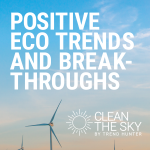Unless you’re from Staten Island, chances are you’ve never been to the borough, except to take the ferry there to see the Statue of Liberty in New York Harbor, only to turn around again. Even its moniker, Borough of Parks, is not well known, but it’s well-deserved, since one third of Staten Island (which is bigger than Manhattan, just across the Hudson River) is devoted to park land. A good chunk of that, Gateway National Park, was saved as green space by a local congressman, and the newest park, Freshkills, is run by his son, Mark Murphy, as part of New York City Parks.
Below, Mark explains how Freshkills, once the site of the largest landfill in the world, is now teeming with wildlife, including migratory birds and iconic American birds of prey. And we learn a bit about Staten Island along the way.
Photography by Valery Rizzo for Gardenista.
Freshkills covers 2,200 acres, 814 of which is wetland that is named after the Staten Island naturalist William T Davis. “It’s reclaimed land that Robert Moses, the first parks commissioner, was trying to dump on, and it was ultimately turned into a park,” says Mark, a fourth generation Staten Islander. “That sort of reclamation was always here in Staten Island.” Moses did succeed in “filling in” what is now North Mound, originally intended to accept household waste for three years to make the land more solid for development. Seven years in, it was the largest landfill in the world. North Mound consists of compacted solid municipal waste that at its highest point is taller than the Statue of Liberty. It marks Phase One of the development of the whole site into what Mark predicts will be New York’s biggest park.

Landscape architects James Corner Field Operations (of Highline fame) won the competition to reconfigure the site; it is slowly being developed and opened to the public in stages. The periphery is open to all (“it’s a fantastic amenity for the communities of the southwest shore of Staten Island,” Mark says) while North Mound Phase One, adjacent to the wildlife refuge, is a 30-acre site that is accessible through group events.

“One percent of the entire native grassland area of the Northeast United States is in Staten Island,” says Mark. “In native grasslands, a city of animals and life is under the grass, and they all feed off of each other in this great ecosystem.” Tree roots don’t get very far in the geotextile that forms part of the capping of the landfill, so they do not become big.

“We have no problem encouraging any type of wildlife to come into Freshkills, whether it’s a plant or an animal,” says Mark. “The fauna and flora out there are incredibly robust.”







